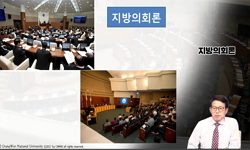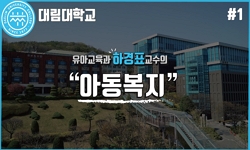본 연구는 스웨덴, 일본, 미국을 비교국가로 선정하고, 각 국가에서 아동옴부즈퍼슨 제도가 운영되 는 체계를 살펴보았다. 또한, 각 국가의 정책사례를 분석하고, 이를 통해 우리나라 아동옴...
http://chineseinput.net/에서 pinyin(병음)방식으로 중국어를 변환할 수 있습니다.
변환된 중국어를 복사하여 사용하시면 됩니다.
- 中文 을 입력하시려면 zhongwen을 입력하시고 space를누르시면됩니다.
- 北京 을 입력하시려면 beijing을 입력하시고 space를 누르시면 됩니다.
https://www.riss.kr/link?id=A109238552
- 저자
- 발행기관
- 학술지명
- 권호사항
-
발행연도
2024
-
작성언어
Korean
- 주제어
-
KDC
370
-
등재정보
KCI등재
-
자료형태
학술저널
-
수록면
125-151(27쪽)
- 제공처
-
0
상세조회 -
0
다운로드
부가정보
국문 초록 (Abstract)
본 연구는 스웨덴, 일본, 미국을 비교국가로 선정하고, 각 국가에서 아동옴부즈퍼슨 제도가 운영되 는 체계를 살펴보았다. 또한, 각 국가의 정책사례를 분석하고, 이를 통해 우리나라 아동옴부즈퍼슨 제도를 위한 정책적 시사점을 도출하였다. 연구방법으로 아동옴부즈퍼슨 제도의 추진배경, 법적⋅제 도적 근거, 구성과 전문성, 역할과 재정을 분석지표로 설정하였다. 분석결과는 다음과 같다. 스웨덴은 첫째, 아동을 권리의 주체로 강조하며, 민주적인 의사결정 과 정에 참여할 권리와 자율성을 부여하였다. 둘째, 국가의 책임과 탈중앙화를 시도하여, 정부는 아동 에 대한 직접적인 책임과 의무를 다하고 지방정부의 자율성을 보장하며 상호 협력하는 구조를 만 들었다. 셋째, 아동의 참여권을 보장하여, 일회성 이벤트 참여가 아닌 지속 가능한 의사결정 과정 에 참여할 권한을 제공하였다. 넷째, 아동의 최선의 이익을 고려할 수 있도록 아동옴부즈퍼슨이 모 니터링하고 정책과 서비스를 개선하도록 하였다. 일본은 첫째, 아동옴부즈퍼슨은 자치 조례에 근거 하여 운영된다. 둘째, 아동옴부즈퍼슨의 주요 업무는 아동인권침해의 구제와 지원, 인권옹호, 민원 상담, 조사 및 조정이다. 셋째, 아동옴부즈퍼슨 사무소의 조직 구조는 일반적으로 3∼5명의 직원으 로 이뤄져 있으며, 아동옴부즈퍼슨은 시장 또는 지사가 2∼3년의 임기로 임명하고 연임이 가능하 다. 넷째, 아동옴부즈퍼슨 사무소는 독립성을 유지하고 있지만, 일부 지방자치단체는 조사 및 시정요청에 대해 최대 40일∼60일 이내에 보고해야 한다. 미국은 첫째, 법적 근거에 따라 아동옴부즈 퍼슨은 독립적이고 자율적인 활동을 수행한다. 둘째, 설립과 운영은 주 의회와 주 정부 승인을 거 친다. 셋째, 아동권리 침해대응과 해당기관에 시정을 요청하는 역할 뿐만 아니라 일부 주에서는 아 동복지정책 및 서비스를 감독하거나 사법처리과정에서 옹호자로 법률적인 지원을 제공한다. 이러한 연구결과를 토대로 아동옴부즈퍼슨 제도를 운영하기 위한 명확한 법적 근거 마련, 국가 나 지방자치단체 정책에 참여할 수 있는 환경 조성, 안정적인 예산 마련, 독립적 권한, 아동권리 침해 대응 체계구축 등을 제시하였다.
다국어 초록 (Multilingual Abstract)
This study focuses on Sweden, Japan, and the United States to compare and examines how the Children’s Ombudsperson system operates in each country. We analyzed the policies of each country and drew suggestions of specific policies for Children’s O...
This study focuses on Sweden, Japan, and the United States to compare and examines how the Children’s Ombudsperson system operates in each country. We analyzed the policies of each country and drew suggestions of specific policies for Children’s Ombudsperson system in the Republic of Korea. The research methodology was based on the background, legal and institutional basis, composition and expertise, roles and finances of the Children’s Ombudsperson system. The analysis results of each country are as follows: First, Sweden emphasizes children as subjects of rights, and gives them autonomy to participate in democratic decision-making processes. Second, the government fulfills its direct responsibilities and obligations to children through national responsibilities and decentralization, creating a structure that ensures the local government’s autonomy and mutual cooperation. Third, it ensures children’s rights to participate, and are empowered to participate, in sustainable decision-making processes, not just one-off events. Fourth, the Children’s Ombudsperson monitors and improves polices and services. First, in Japan, Children’s Ombudsperson operates under a self-governing ordinance. Second, the main tasks of the Children’s Ombudsperson are relief and support for child rights violations, human rights advocacy, complaint counseling, and investigation and mediation. Third, the organizational structure of the Office of the Children’s Ombudsperson typically consists of three to five staff members. They are appointed by the mayor or governor for a term of two to three years, and can be reappointed. Forth, some local governments have up to 40 to 60 days to report on investigations and remediation requests. First, Children’s Ombudsperson of the United States conducts its activities independently and autonomously. Second, its establishment and operation must be approved by the state’s legislature and government. Third, some states oversee child welfare policies and services or provide legal assistance as advocates in the judicial process. Based on these research results, we suggest establishing a clear legal basis for operating the Children’s Ombudsperson system. Creating an environment where children can participate in national and/or local government policies, securing a stable budget, independent authority, and establishing a system to respond to violations of children’s rights.
목차 (Table of Contents)
- ≪요 약≫
- Ⅰ. 서론
- Ⅱ. 연구방법
- Ⅲ. 분석결과
- Ⅳ. 우리나라 아동옴부즈퍼슨 제도수립을 위한 연구의 함의
- ≪요 약≫
- Ⅰ. 서론
- Ⅱ. 연구방법
- Ⅲ. 분석결과
- Ⅳ. 우리나라 아동옴부즈퍼슨 제도수립을 위한 연구의 함의
- ≪참고 문헌≫
동일학술지(권/호) 다른 논문
-
- 한국법과인권교육학회
- 한국법과인권교육학회
- 2024
- KCI등재
-
교장⋅교감의 장애인과의 접촉경험이 장애인에 대한 사회적 거리감에 미치는 영향
- 한국법과인권교육학회
- 이지선
- 2024
- KCI등재
-
아동학대 사례관리대상자의 특성 및 개입 방안에 관한 연구
- 한국법과인권교육학회
- 이은영
- 2024
- KCI등재
-
예비 초등교사의 인권교육 강좌 수강 경험이 인권판단에 주는 영향 분석
- 한국법과인권교육학회
- 구정화
- 2024
- KCI등재





 eArticle
eArticle






